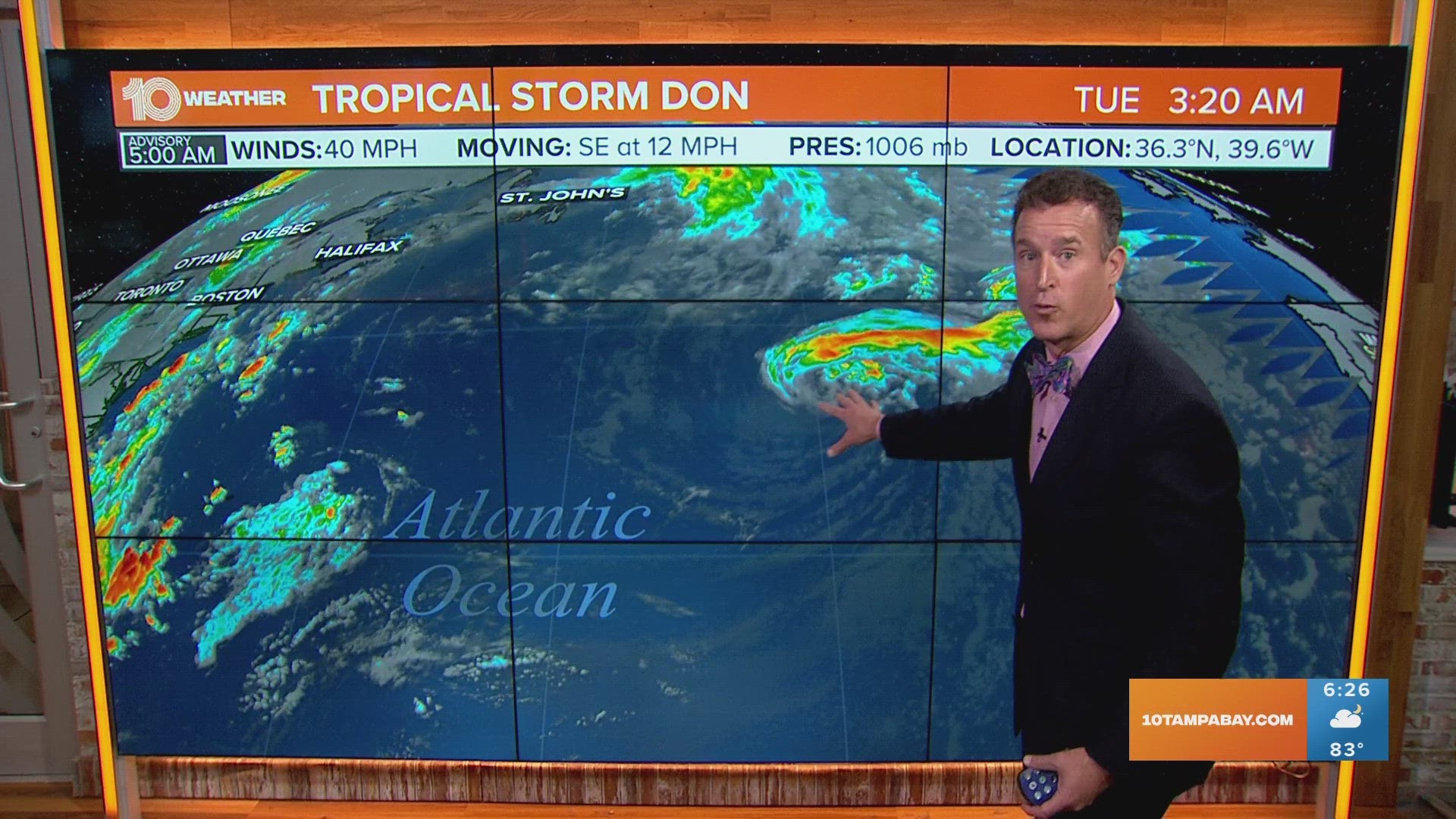ST. PETERSBURG, Fla. — After surviving for days as a subtropical system, Don has finally gained tropical storm status. Still, it's nothing to worry about over here in the U.S. or Florida.
Tropical Storm Don officially formed Monday night after the National Hurricane Center said satellite wind data indicated it had gained the appropriate wind speeds and organization to be classified as a tropical storm.
Don has maximum sustained winds of 40 mph and is moving southeast at 12 mph, according to the latest advisory from the NHC.
The storm has meandered in a loop for days over the central Atlantic and it doesn't look like that will change. Later Tuesday, Tropical Storm Don is forecast to turn to the south before shifting westward and then northwestward by the second half of the week.
Regardless of which direction it's expected to move, Don isn't forecast to move anywhere close to land. Instead, it remains over the central Atlantic — a storm "for the fish," as they say. It's more than 700 miles west of the Azores, a region in Portugal.
Tropical Storm Don could see some strengthening over the next few days, the NHC said.
Don came onto the scene last week as a subtropical storm. According to the National Weather Service, a subtropical storm is a "non-frontal low pressure system that has characteristics of both tropical and extratropical cyclones." Basically, it means that Don is both a tropical system and a non-tropical system.
RELATED: Don spins out in the Open Atlantic
Earlier this month, hurricane experts with Colorado State University modified their predictions for the 2023 season, labeling it as "above-average." This is because sea surface temperatures are also at record-high warmth.
Back in June, the National Oceanic and Atmospheric Administration issued an El Niño advisory, announcing the arrival of the climatic condition. However, experts at the time said this El Niño may not be quite like the others.
Usually, an El Niño mutes hurricane activity in the Atlantic, giving relief to coastal areas in states from Texas to New England, Central America and the Caribbean, weary from recent record busy years. But this time, forecasters don’t see that happening, because of record hot Atlantic temperatures that would counteract the El Niño winds that normally decapitate many storms.
10 Tampa Bay is your Hurricane Headquarters and will be with you throughout the hurricane season.

